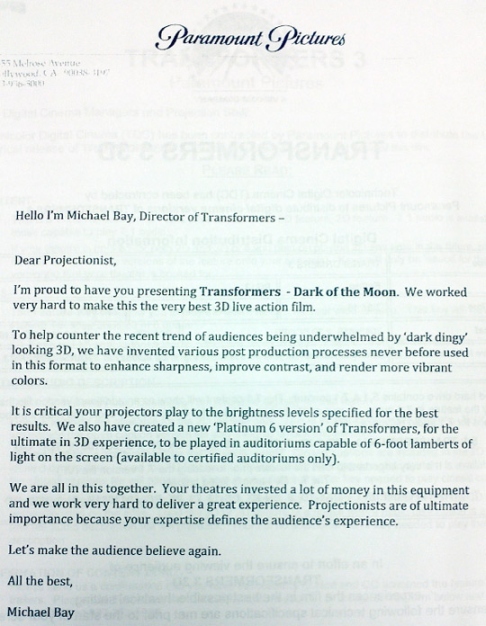In 3D films, the 3D glasses are the reason for the dimness.Because the 3-D glasses are darkly coated with polarized filter that decode the images and give them depth dim.
I've found a good link and let me summarize the stuff from that site.
- According to the so-called father of 3-D cinema, Lenny Lipton, because it projects two separate pictures, viewers lose half their light (half to one eye and half to the other). Then, as we all know, the darkly coated polarized 3-D glasses that decode the images and give them depth dim the movie further.
- If filmmakers didn't plan ahead and initially shoot the feature in 3-D, allowing the director of photography to add light and optimize it for the big screen — you guessed it — darker. And none of the above factors in the projector, which is also wearing 3-D glasses (i.e. a polarizing filter). Better theaters compensate with brighter projectors but odds are your aging, butter-stained neighborhood multiplex doesn't. In Lipton’s opinion it all adds up to 3-D films screening with one-third the light level of a 2-D film.
It's hard to fix the dimness in 3D movies.
“Inception” director Christopher Nolan joined the 3D naysayers, saying that he refused to make his new film in the format largely because of the darkness problem.
According to Nolan;
“On a technical level, it’s fascinating,”, “but on an experiential level, I find the dimness of the image extremely alienating.”
The 3D process, Nolan said;
makes “a massive difference” in the brightness of the image. “You’re not aware of it because once you’re in that world, your eye compensates – but having struggled for years to get theaters get up to the proper brightness, we're not sticking polarized filters in everything."
You cannot see so dimness in Avatar 3D, because Avatar was shot in 3D using techniques that boosted the amount of light and compensated for the darkening process to come, was screened at light levels about half of a run-of-the-mill 2D film.

